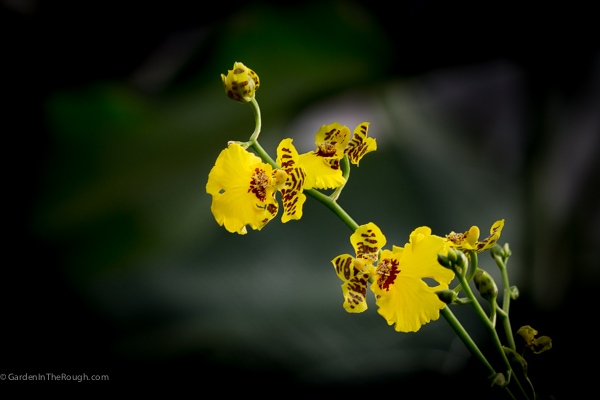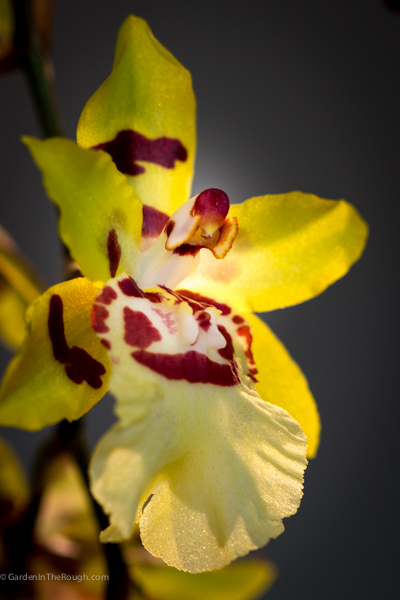Photos of orchids from the 2nd Annual Orchid Show at the Chicago Botanic Garden, February 14 to March 15, 2015.



A trip to the Chicago Botanic Garden last week provided a great opportunity to take in the sights and smells of summer roses. Some of the most common types of roses are described below.
Hybrid Tea
Tea roses, named for their fragrance, are considered “old garden roses” and date back to the mid 1800s. Original tea roses were mostly red, pink, or white and had small weak stems with blooms that drooped. Hybrid tea roses have stems that are longer and stronger. They are available in a wide variety of colors. Hybrid tea roses have individual blossoms, bloom repeatedly, and are usually grafted onto rootstocks of other types of roses to improve growing performance. Of the 40+ million roses produced each year in the US, almost half are hybrid tea roses. They make excellent cut flowers.
Floribunda
Floribunda roses were introduced at the beginning of the 20th century. They have clusters of flowers at the top of each stem and generally do not grow very tall. Many floribunda roses were developed by Eugene Boerner during his time at Jackson & Perkins. Several of his roses were given the All-American Rose Selections award. Floribunda roses are preferred by landscapers, especially for borders and hedges, for their abundant flowers and small, compact size. Several floribunda roses have intense fragrance.
Grandiflora
Grandiflora roses are combinations of floribunda and hybrid tea roses. Grandiflora roses are tall, bloom repeatedly, have clustered blooms, and have slightly shorter stems than hybrid tea roses. The term grandiflora was first used to describe a rose developed in the 1950s for Queen Elizabeth.
Miniature
Miniature roses are just like their full-size counterparts except they are smaller. They are available in a wide variety of colors, sizes, bloom types, and growth patterns. Miniature roses are more hardy in colder climates because they are usually grown on their own roots. They are easy to grow and some are very fragrant.
Examples of these types of roses are shown below.
For more information, check out this link:
One of the joys of spring is the reappearance of a lush green lawn. Amazingly, the grass survived the winter and is now ready to take in the sunshine. Unfortunately, so are the weeds, specifically crabgrass and dandelions. With a little preventative action, these weeds can be kept to a minimum. Here’s how forsythia can help.
Weed Preventers versus Killers—When to Apply?
Crabgrass is a seasonal weed that grows from seeds produced the previous summer (the crabgrass plant dies off in the winter). The seeds survive the winter and germinate in early spring. A crabgrass preventer, or preemergent herbicide, forms a barrier on the soil that prevents sprouting seeds from sending roots into the soil. The best time to apply a crabgrass preventer is when forsythia bushes are in full bloom, usually sometime during the month of April in northern Illinois. Why? Crabgrass seed germination begins when soil temperatures reach 62 degrees F at a depth of 1-2 inches, just after most of the forsythia blooms have dropped. Applying crabgrass preventer when forsythia is in full bloom ensures the treatment has been applied BEFORE germination begins. After the crabgrass preventer has been applied, remember not to rake or aerate, which will compromise the barrier. Also, wait several weeks before starting new grass seed—most crabgrass preventers also prevent grass seeds from germinating! Read the label on the crabgrass preventer to be sure.
Dandelions are perennial weeds that grow from root systems established the previous year. They are not affected by crabgrass preventers. Instead, they are controlled using weed killers. Weed killers work by coming into contact with the leaves, which is how the weed killer is absorbed. Weed killers must be applied when dandelions are actively growing. The best time to apply weed killers is when the weather is warmer, usually well into May and well after forsythia blooms have dropped. Remember not to mow first because this will remove some of the leaves.
Can’t stand those early spring dandelions? Skip the chemicals and dig the dandelions up by hand, preferably before the dandelion blooms have turned to seed. I like to use a weeder with a sharpened fork tip. Place the tip at the base of the dandelion, just under the soil, and lift. The dandelion and a good portion of the root should pop right out.
For further reading, check out these links:
http://www.hewitts.com/garden-tips/lawn-care/crabgrass-preventer-vs-weed-killer/